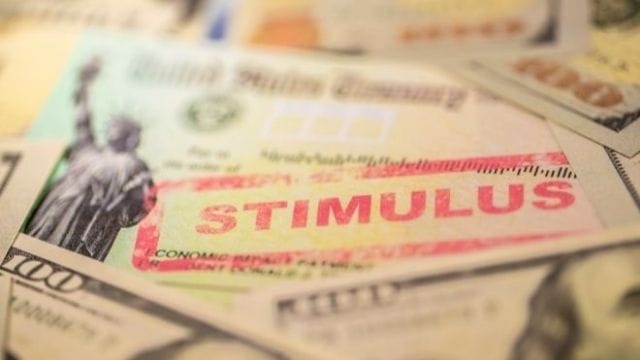If you’re one of the millions of Americans who are still waiting for their stimulus check, you’re probably feeling a bit frustrated. After all, the government promised to get the money out quickly, and it’s been weeks since the first payments were sent out. So what can you do if you don’t get your stimulus check?
First, it’s important to understand why you may not have received your payment yet. The IRS has been overwhelmed with requests for stimulus payments, and they’re doing their best to get the money out as quickly as possible. However, there are a few reasons why you may not have received your payment yet.
If you’re a non-filer, you may not have received your payment yet because the IRS doesn’t have your information. The IRS is encouraging non-filers to use the Non-Filers: Enter Payment Info Here tool on their website to provide their information and receive their payment.
If you’re a filer, you may not have received your payment yet because the IRS hasn’t processed your return yet. The IRS is processing returns in the order they were received, so if you filed your return late, you may not have received your payment yet.
If you’re a Social Security recipient, you may not have received your payment yet because the IRS is still processing payments for Social Security recipients.
If you’re a dependent, you may not have received your payment yet because the IRS is still processing payments for dependents.
If you’re still waiting for your payment, the best thing to do is to be patient. The IRS is doing their best to get the money out as quickly as possible, and they’re working hard to make sure everyone gets their payment.
If you’re still waiting for your payment after a few weeks, you can contact the IRS to check the status of your payment. You can call the IRS at 800-829-1040 or use the Get My Payment tool on the IRS website.
Finally, if you’re still waiting for your payment after a few weeks, you can file a claim for the Recovery Rebate Credit on your 2020 tax return. This will allow you to receive the payment you’re owed, even if you don’t receive it before you file your taxes.
If you’re still waiting for your stimulus check, don’t worry. The IRS is doing their best to get the money out as quickly as possible, and there are steps you can take to make sure you get the payment you’re owed.
Don’t worry if you didn’t receive your first, second, or third stimulus check; you may still claim the payments as a tax credit and receive the funds as part of your tax refund. The Recovery Rebate Credit, which is what the stimulus payments are, is a federal tax credit. To receive the Recovery Rebate Credit, you must file a tax return.
What is the procedure for claiming the Recovery Rebate Credit on my tax return?
The Recovery Rebate Credit can be obtained by filing your taxes. Which stimulus checks you require will determine which tax return you need to file. You can file your taxes for free at GetYourRefund.org, regardless of which taxes you need to file.
More: Second Stimulus Check: How much money would you get? Here are potential calculations
Checks for the First and Second Stimuli
For Tax Year 2020, you will be required to file a tax return (which you file in 2021). This year, the deadline to file your taxes was May 17, 2021. The deadline to file a tax extension is October 15, 2021.
You can still file your tax return to receive your first and second stimulus cheques if you missed the deadline. There is no penalty for filing late if you do not owe taxes. If you owe taxes, penalties and fines may apply if you do not file or pay them on time. Your tax refund may be reduced by the government to cover any unpaid taxes and other federal and state debts.
Checking for Stimuli for the Third Time
For the fiscal year 2021, you will be required to file a tax return (which you file in 2022). Your tax return must be filed by April 18, 2022.
Getting Your Taxes Filed
Tax software like MyFreeTaxes, H&R Block, or TurboTax can help you figure out if you qualify for the Recovery Rebate Credit.
More: Second Stimulus Check: How much money would you get? Here are potential calculations
If your income is less than $72,000, you can prepare and file your federal income taxes online for free using IRS Free File. During tax season, you can also utilize the IRS VITA Locator tool or go to AARP Foundation Tax-Aide to find a free tax location near you if your income is less than $56,000.
If you get your first, second, or third stimulus check, you’ll need to know how much each check was worth. Click here for assistance in determining the number of your cheques. If you haven’t gotten your stimulus checks, you’ll be asked a series of questions to validate your eligibility and the amount you owe.
Checking the Stimulus for the First Time
If you are eligible for the Recovery Rebate Credit based on your 2020 tax return and did not qualify for the first stimulus check based on your 2018 or 2019 taxes, you can claim it (which you file in 2021).
Here are several scenarios in which you might need to behave to get the first stimulus check:
You were not eligible for a stimulus check if you were claimed as a dependent on someone else’s 2019 tax return (see Q C6). If that changes in 2020, and you fulfill the other eligibility standards, you can claim the credit on your federal tax return for that year (which you file in 2021).
You can claim the tax credit on your tax return if you are detained and did not get your first stimulus payment.
If your family was previously rejected a stimulus payment because only one spouse had a Social Security number (SSN), that regulation has now been amended. The first stimulus check can be claimed as the Recovery Rebate Tax Credit by the spouse with the SSN and qualifying children with SSNs. For both spouses to claim the first stimulus check, only one spouse needs to have an SSN if you’re a military household.
If your first stimulus check did not include all of your qualifying dependents (see Q C5), or if your income reduced in 2020 and you only received a partial stimulus check due to your 2018 or 2019 income (see Q B11), you can claim the extra money by filing a 2020 tax return (which you file in 2021).
Check for a Second Stimulus
If you did not qualify for the second stimulus check based on your 2019 taxes, you may be eligible for the Recovery Rebate Credit based on your 2020 tax return if you are eligible. Please note that certain eligibility conditions for the second stimulus check differ from those for the first stimulus check.
Here are some examples of when you would need to act to get the second stimulus check:
You were not eligible for a stimulus check if you were claimed as a dependent on someone else’s 2019 tax return. If that changes in 2020, and you fulfill the other eligibility standards, you can claim the credit on your federal tax return for that year (which you file in 2021).
The IRS will not reissue your second stimulus check if it was sent to a bank account that is closed or no longer functioning. Instead, you’ll have to claim the cash as a Recovery Rebate Credit on your 2020 tax return.
If your second stimulus check did not include all of your qualifying dependents, or if your income reduced in 2020 and you only received a half stimulus check based on your 2019 income, you can claim the extra money on your 2020 federal tax return.
Checking for Stimuli for the Third Time
If you are eligible for the Recovery Rebate Credit based on your 2021 tax return and did not qualify for the third stimulus check based on your 2019 or 2020 taxes, you can claim it.
More: These Ten States Are Sending Out Stimulus Checks. Are You in the List? Check Here
Here are several scenarios in which you might need to act to get the third stimulus check:
You were not eligible for a stimulus check if you were claimed as a dependent on someone else’s 2020 tax return. If that changes in 2021 and you complete the other standards, you can claim the credit on your federal tax return for that year (which you file in 2022).
If you did not receive the right amount on your third stimulus check, it was based on your 2019 return or information from the Social Security Administration, Railroad Retirement Board, or Veteran Affairs.
If your third stimulus check did not include all of your qualified dependents, or if your income reduced in 2021 and you only received a half stimulus check due to your 2019 or 2020 income, you may be able to claim the extra money when you file your federal tax return for 2021. (which you file in 2022).



